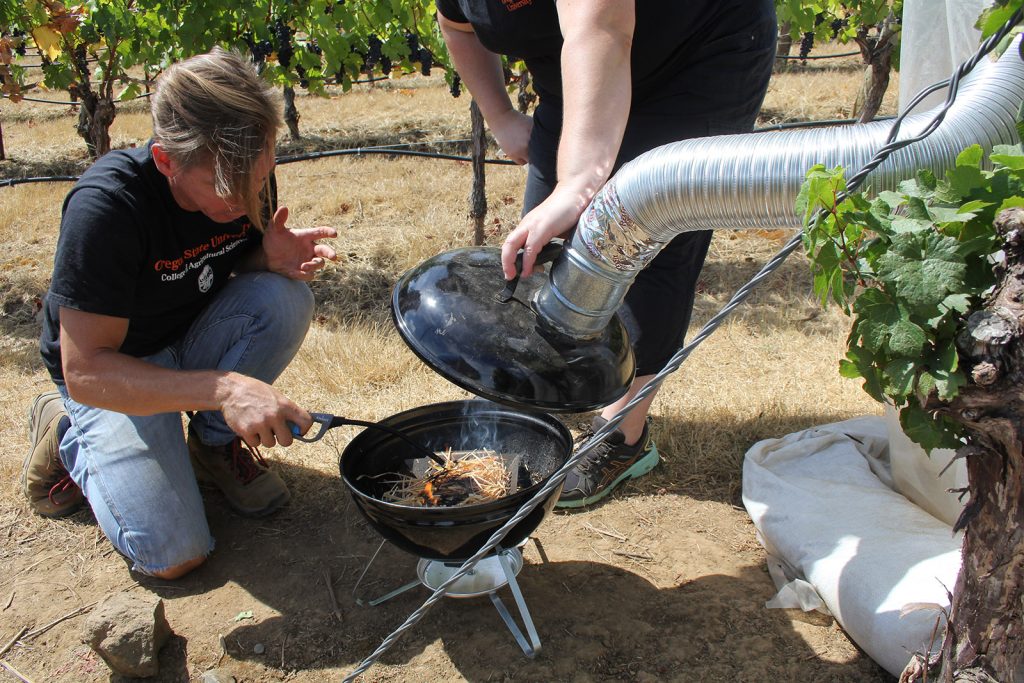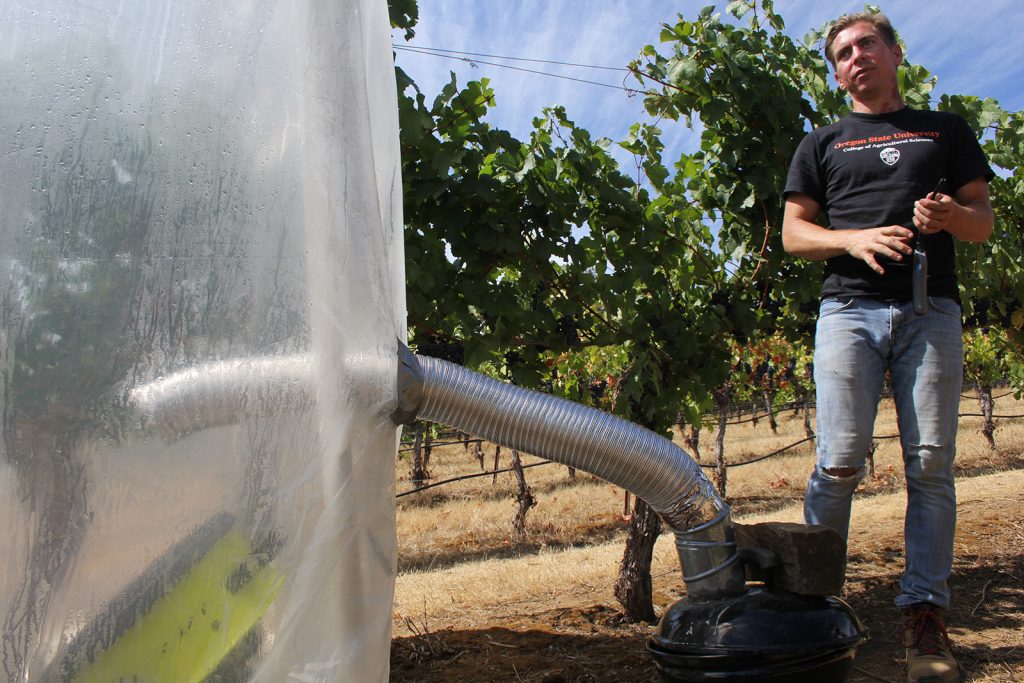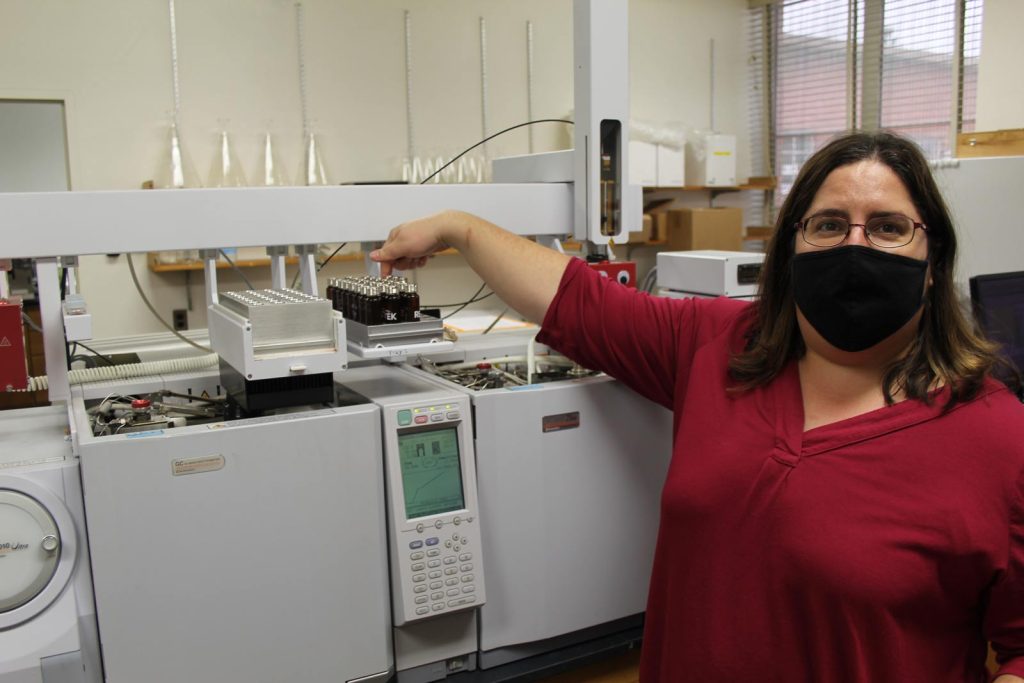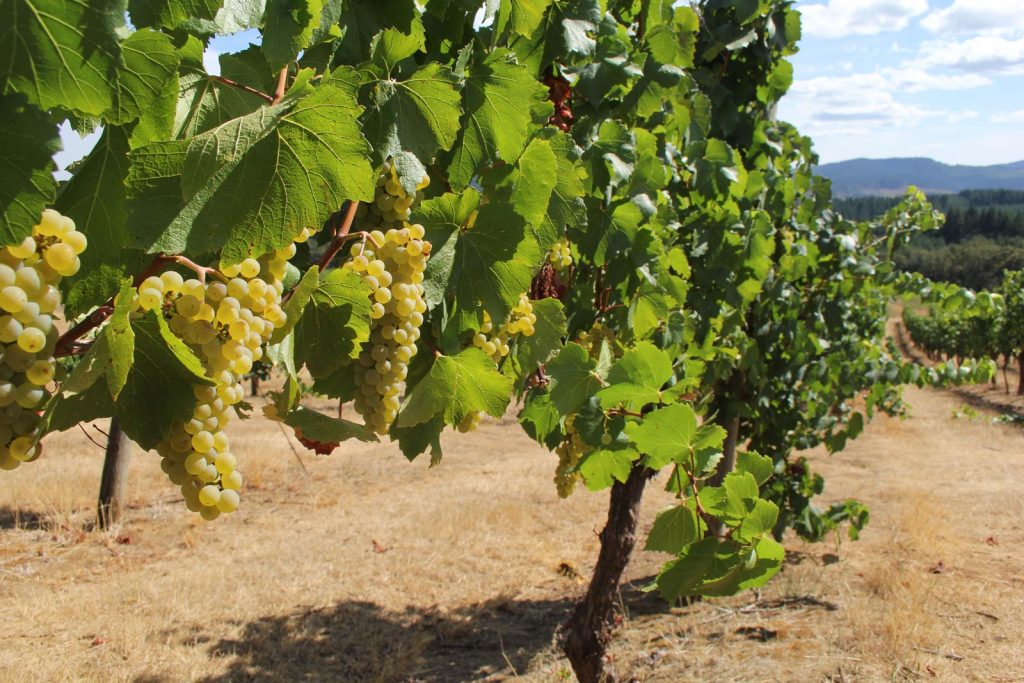
Resolving the challenges of smoke taint
Ongoing efforts to overcome the aftermath of bushfires.
Summer brings many things with it: warm weather means more guests at cellar doors and vintage just around the corner – but it can also mean the onset of bushfire season. As the mercury rises, journalist Harrison
Davies explores how smoke can effect grapes and what strategies winemakers can employ to reduce the effects smoke taint has on their fruit.
Wine regions are commonly located in areas that can experience catastrophic fire danger each summer, with the impact of bushfires often felt long after the last embers have been extinguished.
For many producers in Australia, smoke taint is an unfortunate fact of life.
Grapes are typically under the greatest threat of smoke taint after budburst and as the berries begin to fruit, coinciding with the summer bushfire season.
The Australian Wine Research Institute (AWRI) put it quite frankly in their factsheet discussing the impacts of smoke taint on wine.
“The exposure of vineyards and grapes to smoke may result in wines with undesirable sensory characteristics, such as ‘smoky’, ‘burnt’, ‘bacon’, ‘medicinal’ or ‘ash’, often described as ‘smoke taint’,” the report stated.
Grapes affected by too much smoke are not recommended for use and generally have to be left on the vine, at great expense to producers.
As the climate changes and temperatures rise, winemakers around the world, and especially in Australia, will likely have to contend with the effects of smoke taint on their grapes more often.
Joel Pizzini is the winemaker at Pizzini Wines in the King Valley in North East Victoria, and has had several experiences with smoke taint following major bushfire events in 2007 and 2019.
“In 2019, we were fairly lucky as we only had mild levels of the smoke compounds that the AWRI measure, which meant that we were still able to harvest most of the white varieties, as well as put together a rosé,” he said.
“Unfortunately we didn’t pick any of the varieties to make dry red and had to leave the berries for the cockatoos to clean up for us.
“2007 was a different story, however, and our whole harvest for that year was greatly impacted by smoke taint.”
Wine researchers across the globe are looking for solutions to tackle an issue that is effecting more producers each year.
Unfortunately we didn’t pick any of the varieties to make dry red and had to leave the berries for the cockatoos to clean up for us.
Joel Pizzini

What can be done about smoke?
In the United States, Oregon State University (OSU) has received a US$7.65 million dollar grant to study the effects of smoke on grapes.
Wine regions in Southern Oregon and Northern California have experienced large wildfire events over the last few years.
Associate professor of oenology and lead researcher on the grant at OSU, Elizabeth Tomasino, said the research would go a long way in providing tools to allow the viticultural industry to respond to these turbulent events.
“Smoked grapes mean that wines either are not produced that year or winemakers have to use different strategies to produce a different style of wine, many times not as high quality as they would like.
“Compounds in the smoke are absorbed into the grape berry. However these become bound to sugars so you don’t notice any impacts to smoke when you taste the grapes, only during and after fermentation.
“It is unfortunately becoming more the norm than the exception.
“We are running grape samples and wine samples primarily for the Oregon industry while they are picking and processing to help them with decision making.
“From a research standpoint we are getting a lot of information… All the samples that are being dropped off for analysis are providing GPS coordinates so on analysis we are working with atmospheric scientists that do air readings.
“We’ll be able to link that information up and see if we can build predictive models.”

We will be able to provide both grapegrowers and winemakers with strategies to ensure they make the same high quality wine year to year, even if a smoke event occurs.
Elizabeth Tomasino
Smoked grapes require a different style of winemaking and force producers to change the flavour of their vintage in order to produce something that is absent of the smoky flavour.
Associate Professor Tomasino said she hoped the study would provide support to producers and allow for more flexibility in winemaking following wildfire events that effect the harvest of grapes.
“We will be able to provide both grapegrowers and winemakers with strategies to ensure they make the same high quality wine year to year, even if a smoke event occurs,” Professor Tomasino said.
It will also optimise a rapid small-batch fermentation method to predict what a wine impacted by smoke will taste like when fermented on a commercial scale.
This reflects a recommendation made by the AWRI on managing a vintage effected by smoke and also echoes the experience Pizzini had following the bushfires of 2007.
“After the fires in 2007, we ended up only picking a little bit of fruit and doing a small fermentation to experiment with injecting the juice with carbon,” he said.
“We found that using reverse osmosis would sequester a lot of the smoky flavours from the wine but would also change the flavour.
“Using reverse osmosis also meant that the wine would only be good for about six months before the smoky flavour started to return.
“We just had to settle for a smaller vintage that year, whereas this year the levels of smoke were significantly smaller.
“Most recently we used some carbon to clean any element from the wine that could be related to smoke and were also blessed to have a really good vintage with strong flavours.
“It was our saving grace to come into [the fire season] with a good vintage that had a strong flavour profile and that meant that using the carbon wouldn’t knock the flavour about too much.”
The study being conducted looks to produce technology that can monitor vineyards and provide real-time risk assessment in vineyards, as well as assess the impact of smoke exposure on the health of grapes and grapevines.
It will also optimise a rapid small-batch fermentation method to predict what a wine impacted by smoke will taste like when fermented on a commercial scale.
This reflects a recommendation made by the AWRI on managing a vintage effected by smoke and also echoes the experience Pizzini had following the bushfires of 2007.
“After the fires in 2007, we ended up only picking a little bit of fruit and doing a small fermentation to experiment with injecting the juice with carbon,” he said.
“We found that using reverse osmosis would sequester a lot of the smoky flavours from the wine but would also change the flavour.
“Using reverse osmosis also meant that the wine would only be good for about six months before the smoky flavour started to return.
“We just had to settle for a smaller vintage that year, whereas this year the levels of smoke were significantly smaller.
“Most recently we used some carbon to clean any element from the wine that could be related to smoke and were also blessed to have a really good vintage with strong flavours.
“It was our saving grace to come into [the fire season] with a good vintage that had a strong flavour profile and that meant that using the carbon wouldn’t knock the flavour about too much.”

Smoky flavours
Producers with vintages greatly affected by smoke are looking at way to get the most out of grapes that need a bit of tender loving care to be used.
In a January 2020 article in the Grapegrower & Winemaker, Con Simos and Mark Krstic from the AWRI outlined several recommendations to producers with grapes effected by smoke.
Suggestions included hand harvesting fruit so as not to break the skins of the berries for as long as possible, excluding leaf material that could carry residual smoke flavours and keeping fruit cool, which will lead to less smoke related flavours being extracted.
“It should be noted that while these techniques may help reduce the
extraction and expression of smoke taint compounds, they are unlikely to eliminate the problem completely,” they said.
The AWRI also recommends reverse osmosis, but reflected Pizzini’s comment that the smoky flavours can still return over time.
Pizzini said that working fast also meant that his winemaking team
could avoid the worst of the smoke’s effects.
“Going into the fire season of 2020, we prepped the winemaking team to process grapes as soon as they came in,” he said.
“We didn’t book back-to-back deliveries of fruit so we could have time to remove anything that would contribute to smoky flavours.
“We also tried not to harvest grapes when it was too hot and did a lot of harvesting after the sun had gone down.”
Following the 2019 fires, several winemakers with grapes that were quite severely effected by smoke have explored ways to use their grapes to make an alternative product.
Adelaide Hills producers Simon Tolley Wines and Vntlpr both explored using smoke affected grapes to make spirits and harness the smoky flavours rather than hide them
Back in Oregon, Associate Professor Tomasino said that providing options and tools for producers to meet similar challenges was the best way for industry to move forward.
“It will continue to be a major concern until we can provide really effective management information and mitigation techniques,” she said. “This grant will help speed up that process
significantly.”
This post was originally featured in the December 2021 issue of the Grapegrower & Winemaker.
To read more articles like this, subscribe online here.